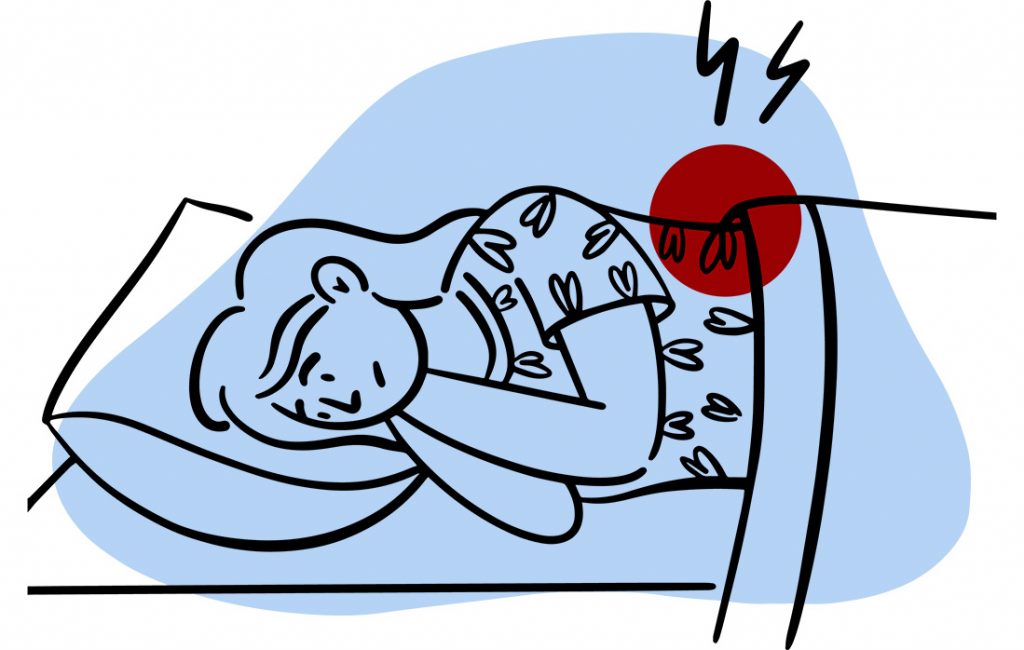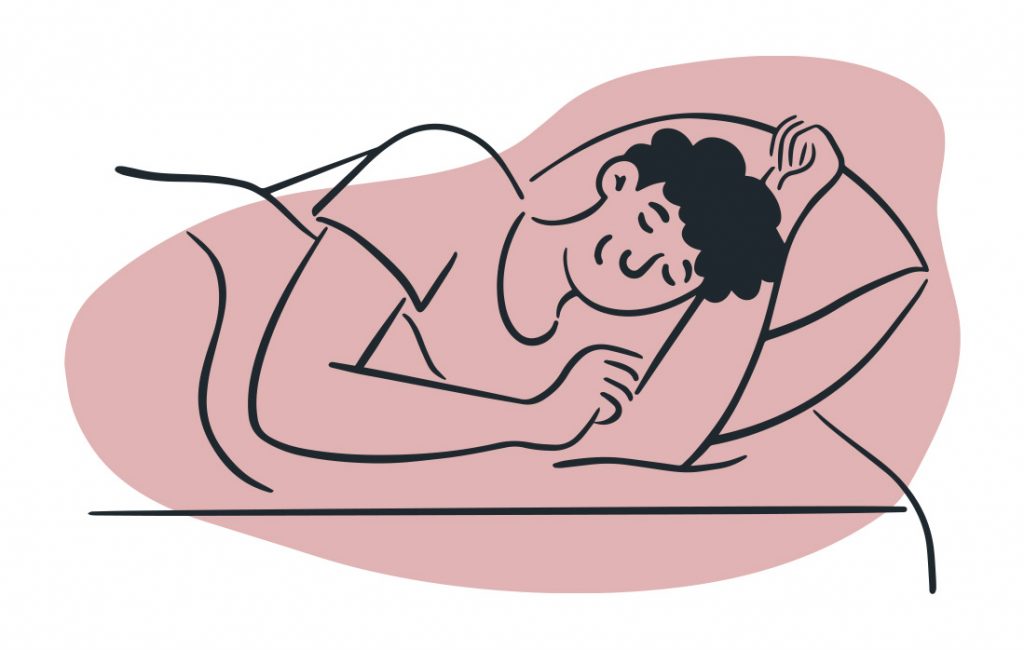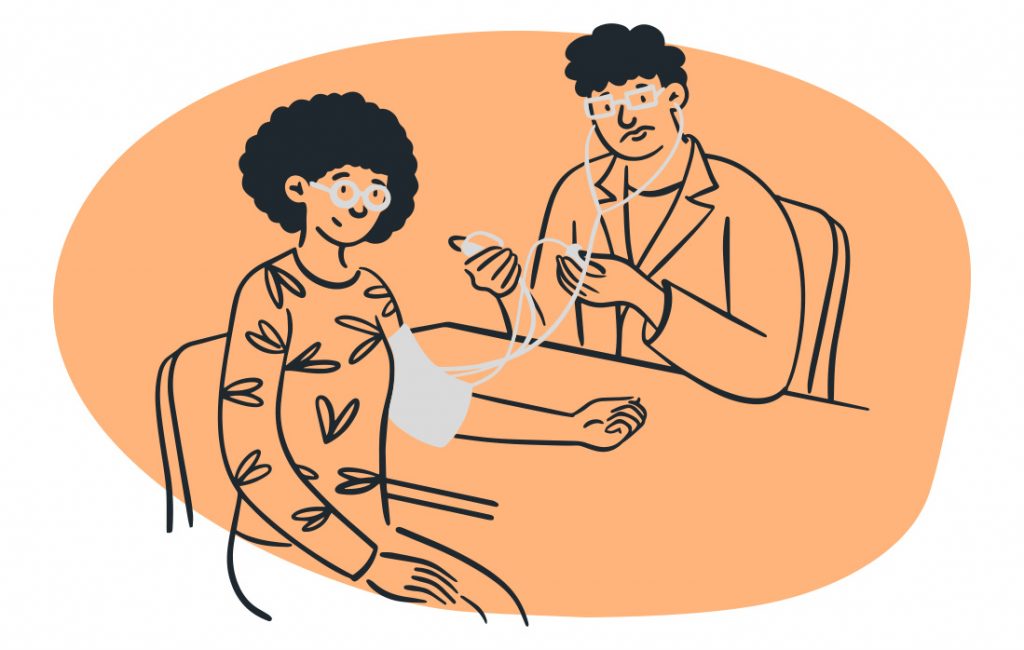The Best Postures for Back and Neck Spine Alignment
Disclosure: By clicking on the product links in this article, Mattress Nerd may receive a commission fee at no cost to you, the reader. Read full disclosure statement.
Medically reviewed by Ashely Barrett, a Doctorate of Physical Therapy for 7 years with specialties in sports rehab, neurological rehab, and geriatrics.
Posture is important, even when you’re sleeping. Spending each night in an awkward position can play a big role in spinal alignment and back health.
Keep reading to learn how to optimize your sleep for spinal alignment. That includes the best and worst sleeping positions for your back, plus tips to help you wake up pain-free.

Spine Alignment
When your spine is aligned, your body maintains a fairly straight line from your head all the way down your back. A healthy spine has three natural curves:
- Cervical curve: a forward curve at the neck
- Lumbar curve: an inward curve at lower back
- Thoracic curve: a backward curve at the upper back
The spine’s 33 vertebrae are stacked vertically and help keep your body functioning properly. More than that, an aligned spine can help prevent back pain, stiffness, and other related health concerns.
Since humans spend about one-third of their lives sleeping, your time spent in bed can have a major impact on spinal alignment. Proper posture during sleep can promote back health, reduce pain, and help you wake up feeling refreshed. Meanwhile, poor posture can cause tightness, pain, and poor sleep quality.

How to Align Your Spine In Bed
Ready to align your spine while you sleep? Here are some top-notch tips.
Stick to the Best Sleeping Positions For Spine
What are the best sleeping positions for your spine? The short answer: On your back or side.
According to a 2019 review, side and back sleeping are associated with less back pain than stomach sleeping. There are also ways you can optimize these positions for even better sleep posture.
Avoid the Worst Sleeping Positions For Spine
Most researchers agree that sleeping on your stomach is the worst position for spinal health. It can put extra pressure on your spinal column and may lead to pain.
If you’re set on stomach sleeping, there are some ways you can make the most of this position. Use a thin, firm pillow to keep some tension off your neck. Also, try to keep your legs parallel and your arms placed at either side of your torso. Placing a thin pillow under the pelvis region can also help align the spine and prevent the amount of lumbar lordosis (or excessive curve) while lying on your stomach.
Choose a Supportive Mattress
The right mattress can improve posture, reduce pain, and help your spine stay aligned. But the wrong mattress can seriously stress out your back and cause discomfort.
That said, opt for a mattress that offers solid support for your spine. Medium-firm mattresses are usually best for this. But if you currently own a soft mattress, there are several ways to make it firmer. You can place a firm mattress topper on your bed. Or, try flipping your mattress and placing it on a sturdier box spring or foundation.
Pick the Right Pillow
When picking a pillow, look for factors like size, firmness, and material. It’s also good to go with a pillow that suits your sleep position of choice.
- Stomach sleepers should use a thin but firm pillow.
- Back sleepers can opt for a pillow that keeps the chest and tip of chin at the same level.
- Side sleepers may want to place a pillow between their legs. It can help maintain the spine’s natural alignment and reduces stress on the hips.
Also, make sure you place your pillow in the right spot. If it’s too low or too high, it can add strain on your neck.

When To See A Doctor
Back pain isn’t a one-size-fits-all situation. Lots of causes can factor into your pain or discomfort. If your pain persists for more than a few days — or if you think your symptoms are getting worse — it might be time to talk to a doctor.
You should also reach out to a doctor if you experience:
- Difficulty peeing
- Loss of bowel or bladder control
- Sudden or unexplained weight loss
- Numbness in the back, legs, or groin
- Frequent fevers that coincide with back pain
- Chronic back pain after a traumatic injury or sharp pains that do not change with position changes or body movement
Tips To Sleep Better
Here are some tips to help you get a better night’s rest while supporting your spinal health.
- Buy a mattress topper. If you’re not ready to commit to a whole new mattress, try a topper! Mattress toppers are more affordable but can yield similar results.
- Exercise regularly. Working out — especially core and back exercises — can help bolster spinal health. Just be sure to mind your form. Improper posture or pushing past your limits can increase your risk of injury.
- Be patient with the process. Adjusting your sleep positions can take time. But keep at it! If you’re a lifelong stomach sleeper, switching to side sleeping might be easier than back sleeping. You can also try to use a prop. A body pillow or memory foam pillow can make the transition a lot easier.
FAQs About Sleeping Posture
What is the healthiest sleeping position?
For most folks, sleeping on the back or side are the best sleeping positions for spinal alignment. You can optimize these positions even more by using the right type of pillow and sleeping on a supportive mattress.
How should I sleep to relieve back pain?
You may be able to relieve back pain by sleeping on your back or side. Here’s how to optimize these positions.
- Back sleeping: Lie on your back in a reclined position. You can also place a pillow under your knees.
- Side sleeping: Lie on your side in the fetal position with a pillow propped between your knees.
Is it bad to sleep on your stomach?
Sleeping on your stomach is generally considered the worst sleep position for spinal alignment. But if you have to sleep on your stomach, place a thin, firm pillow under your head. You can also put a thin, soft pillow under your abdomen to help support your spine.
Does sleeping without a pillow help posture?
Not necessarily. Pillows can have an awesome effect on spinal alignment. The trick is finding the right pillow for your preferred sleeping position ensuring your cervical spine is aligned when in your preferred sleeping position. This means your neck is in neutral instead of flexed or extended in any direction.
Final Thoughts
Proper sleep posture can promote healthy spinal alignment. In turn, it can improve your sleep hygiene, reduce back pain, and benefit your overall health.
The best sleep positions for back health are back or side sleeping. Stomach sleeping tends to have the worst impact on spinal alignment. However, you can get a great night’s sleep regardless of your preferred sleep position. A few minor adjustments can go a long way!
Source List
- Cary D, et al. (2021). Examining Relationships Between Sleep Posture, Waking Spinal Symptoms and Quality of Sleep: A Cross Sectional Study.
https://www.ncbi.nlm.nih.gov/pmc/articles/PMC8631621/ - Cary D, et al. (2019). Identifying Relationships Between Sleep Posture and Non-Specific Spinal Symptoms in Adults: A Scoping Review.
https://www.ncbi.nlm.nih.gov/pmc/articles/PMC6609073/ - Sleep Disorders and Sleep Deprivation: An Unmet Public Health Problem. (2006). https://www.ncbi.nlm.nih.gov/books/NBK19956/


